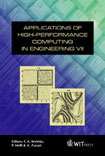A Neural Network Implementation For Data Assimilation Using MPI
Price
Free (open access)
Volume
27
Pages
Published
2002
Size
540 kb
Paper DOI
10.2495/HPC020211
Copyright
WIT Press
Author(s)
H. F. de Campos Velho, S. Stephany, A. J. Preto, N. L. Vijaykumar & A. G. Nowosad
Abstract
The meteorological data assimilation process can be described as a procedure that uses observational data to improve the weather forecast produced by means of a mathematical model. Traditional methods include deterministic and probabilistic approaches. Included in the latter class, Kalman filtering has the advantage of minimizing the error propagated during the data assimilation. However, this method demands a heavy computational power as it usually deals with meteorological parameters for a huge number of grid points. Recently, neural networks have been proposed as a new method for meteorological data assimilation by employing a Multilayer Perceptron network with backpropagation learning to emulate Kalman filtering at a lower computational cost. In order to further reduce that cost and to overcome performance bottlenecks of the training phase, code optimizations were performed, making use of classical, hardware-independent techniques and Fortran 95 intrinsic functions, thus eliminating inefficient routines. A former attempt to parallelize the code and run it in a 4-processor shared memory machine, made use of HPF (High Performance Fortran) directives imbedded in the optimized code. Performance was poor and therefore a new version of the Fortran 95 code was developed using Message Passing Interface library calls. This code was executed in a 16-node multicomputer showing good speed-up up to 4 processors.
Keywords




